OnePlus 9 Pro review: a refined, niche flagship
The OnePlus 9 Pro is a legitimate flagship phone that is genuinely competitive with the best Android phones on the market — at least from a features and quality perspective. Yet in terms of market and mind share, it’s still destined to be a niche device for a small group of enthusiasts looking for a specific kind of elegance in their Android device.
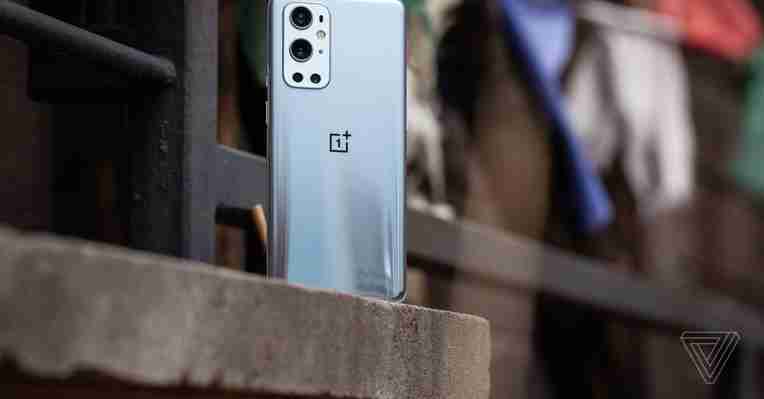
And that’s great.
If you live in the US and you’re buying an Android phone, chances are very high that you’ll end up with a Samsung Galaxy phone. Samsung has the carrier relationships, quality, and marketing that have led directly to market share. LG, Motorola, and even Google sell more phones here than OnePlus does.
But after nearly seven years and dozens of phones, OnePlus has established itself as a brand that can make great phones that are serious alternatives to the mainstream. The $1069 OnePlus 9 Pro (the only option in North America, other parts of the world have access to a slightly less expensive model) achieves that goal with only a handful of notable compromises.
OnePlus’ flagship phones always come with a laundry list of top-of-the-line specs, but what makes the OnePlus 9 Pro good isn’t the numbers; it’s how well those specs translate into one of the best experiences you can get using Android.
8 Verge Score OnePlus 9 Pro $ 1069 The Good Great screen
Elegant software
Fast charging The Bad Camera can overprocess images
Digital zoom is weak
No 5G on AT&T, awaiting Verizon 5G certification $1069.00 at OnePlus$1069.99 at Best Buy
The OnePlus 9 Pro has an elegant design but won’t support 5G on all networks.
OnePlus 9 Pro hardware design and 5G support
The hardware design on the OnePlus 9 Pro is the most seamless, elegant phone that the company has designed to date. It is, of course, big. It has a 6.7-inch screen that goes from edge to edge in a body that’s narrow enough to make it just barely usable for me in one hand.
What I can’t help but notice is how far OnePlus has come in build quality. The glass on the front and back curves into the aluminum rail on the edges with no seams at all. It’s well-balanced, beautiful, and solid.
Top: OnePlus 9 Pro. Bottom: Galaxy S20 Plus. Both phones have similarly curved glass and molded aluminum rails.
It has a three-stage ringer switch.
It’s also the spitting image of a Galaxy S20 Plus. Shift a couple of buttons around, move the selfie camera to the middle, and swap out the logo, and it’s the same design. I get that there are only so many ways to sandwich curved glass and aluminum together, but it’s uncanny.
To be fair, OnePlus does keep some of its identity in the three-stage ringer switch, which easily lets you toggle between a ringer, vibration, and fully silent. It may still be my favorite feature on OnePlus phones, and I remain baffled as to why more Android phone makers don’t adopt a physical ringer switch.
Speaking of vibration, the haptics on the OnePlus 9 Pro aren’t sloppy at all, unlike many Android phones. Unfortunately, the trade-off is that they aren’t very strong; I often can’t feel it vibrate in my pocket.
The OnePlus 9 Pro has the top-tier Qualcomm Snapdragon 888 processor, which is paired with eight gigs of RAM on the 128GB model. Unfortunately, this configuration isn’t sold in North America — OnePlus originally expected to make it available, but later said that supply constraints led it to offer only the more expensive version with 256GB of storage and 12GB of RAM. There’s no microSD card slot for storage expansion in either model. What you get is what you get.
It supports both Sub-6 and millimeter-wave (mmWave) styles of 5G, but there’s a significant caveat: the phone supports it, but OnePlus has only managed to land 5G certification from its carrier partner, T-Mobile. If you buy it unlocked, as of now, it will only work with T-Mobile’s 5G network. Everything else will be LTE. AT&T 5G support doesn’t appear to be in the cards at all, and as for Verizon, OnePlus says that it “continues to work with Verizon to certify both the 9 and 9 Pro on its 5G network.” Later, on March 26th, Verizon announced that it would support 5G on the OnePlus 9 and 9 Pro.
OnePlus’ wireless warp charger can fully charge the phone in under 45 minutes.
OnePlus 9 Pro battery and charging
For OnePlus, the standout spec is its proprietary charging technology. There’s a 65W charger included in the box, and it can charge up the phone ridiculously fast. The phone’s 4,500mAh battery is actually split in two, which helps further speed charging.
The 65W charger comes in the box (pictured with the regular OnePlus 9).
If you like, you can spend an additional $69 on OnePlus’ new Warp Charge 50 wireless charger. It charges at 25W, but since the battery is split, it’s essentially the same as charging at 50W, wirelessly. It also works if you set the phone on the charger in landscape mode. With the phone fully dead, it charged completely in 45 minutes. With ambient mode in Google Assistant on, it took a bit longer — but it was still wicked fast compared to other wireless chargers.
That 4,500mAh battery was enough to get me through a full day and a half of moderately heavy usage. However, OnePlus phones do tend to be a little more variable in their battery life depending on use. Spending a day shooting 4K video and pushing the processor with games meant I could kill it with less than four hours of screen-on time.
So while the battery life might not be best in class, the way OnePlus has built its ecosystem for charging means I’m able to top off faster than I can with other phones — provided I use OnePlus’ proprietary chargers, of course.
The OnePlus 9 Pro has an LTPO OLED screen, which can help with battery life.
OnePlus 9 Pro screen
After wireless charging, the next standout spec on the OnePlus 9 Pro is that 6.7-inch screen. Like Samsung, OnePlus has switched over to an LTPO style of OLED, which can be more power efficient and allows the company to have more control over the refresh rate.
The screen can go all the way from 120Hz on down to 1Hz, depending on what’s happening on the display. OnePlus has branded the touch response rate on the screen as “Hyper Touch,” clocked at 360Hz for certain games, and though I am dubious it makes that big a difference for gamers, OnePlus says it could. More consequential is the screen resolution: 1440 x 3216 at 525ppi. You can leave it at that high resolution and have the high refresh rate screen going at the same time. Doing so probably hits battery life, but to me, the point of this max-spec phone is to max the specs, so I didn’t turn down the resolution or the refresh rate.
Those are the specs on the screen, but it’s the experience that matters. And again, I think OnePlus has done a remarkable job here. Something about the tuning of the animations in OxygenOS makes this phone feel just a little bit smoother than even Samsung phones. I also appreciate the color tuning — although it’s not as subdued as an iPhone or even a Pixel, it’s more restrained than Samsung’s default settings.
The whole camera system on the OnePlus 9 Pro is solid but has room to improve.
OnePlus 9 Pro camera
Without delving into a lot of history, I will just point out that until very recently, camera quality has been the main downfall for OnePlus phones. It’s a particularly bad way to fall down, too, because often, the clearest and simplest way to compare phones that otherwise look and perform nearly equivalently is to look at the photos they take.
OnePlus knows all of this and wants to position the OnePlus 9 Pro as a heads-up competitor — or at least a viable alternative — to the very best Samsung and even Apple have to offer. So it did a thing a lot of challenger brands do: called in a ringer.
The Hasselblad partnership is only about color tuning and interface design this year
That ringer is Hasselblad, which OnePlus is partnering with to improve its camera results. It will be a multiyear effort, and it’s far from guaranteed it’ll be a fruitful partnership. In fact, most of these sorts of deals don’t really do anything notable when it comes to the camera’s quality.
This year, Hasselblad’s participation with OnePlus’ development process amounted to helping the company tune the colors from the camera and lending a bit of its interface to the camera’s Pro mode. Oh, and most importantly for OnePlus, Hasselblad allowed its logo to be stamped next to the lenses.
I do think there’s some credit due to this color-tuning influence. In the same way that other smartphone brands have a “look” to their photos, I think OnePlus is developing its own. iPhone photos are generally flat and neutral, tending to the warm side of color; Pixel photos contrasty and blue; and Samsung photos have the vibrancy slider set to max.
OnePlus 9 Pro: indoor with mixed lighting handles color well.
OnePlus tends to ramp up blue colors, which is usually fine but can sometimes get the camera into trouble. OnePlus does a good job of not adding too much vibrancy when it’s not there in the first place.
The OnePlus 9 Pro’s image output lands mostly in the middle. It tends toward blue, and it definitely lifts up shadows to create more even lighting. Its photos are more striking but less accurate than what you’ll get out of an iPhone.
The camera system is good, but it can’t quite match the quality you get from an iPhone 12 Pro Max or Samsung Galaxy S21 Ultra — both of which cost more than the OnePlus 9 Pro. It handles a variety of conditions quite well, but sometimes I just had to take an extra beat to compose my shot. It let me better judge what the viewfinder was showing and, honestly, gave me time to try the shot again.
Galaxy S21 Ultra (left) vs. OnePlus 9 Pro (right)
As usual with smartphone cameras, I think the difference comes down to software. I like the colors the 9 Pro produces, but sometimes it just tries too hard and whiffs. Similarly, OnePlus seems to want to bring a little of that Pixel contrast magic to bear but instead just oversharpens. And lightening shadows is sometimes laudable, but not when it adds completely unnecessary and distracting image noise.
The camera can try too hard to brighten shadows, introducing noise.
The camera oversharpens sometimes, too. Take a look at the fringing around the runners on the lake in this ultrawide shot.
The main camera uses a new 48-megapixel Sony sensor with OIS, though when I pressed OnePlus to tell me what exactly that sensor brings to the table, I didn’t really get a clear answer. You can shoot 12-bit RAW images in the Pro mode (which is two bits more than last year, if you’re keeping count).
That’s all nice, but the interface on Pro mode is what gets me. You can clearly see what’s set to manual and what’s in auto mode. It’s simple and easy to use, too. Best of all is focus peaking, which draws little lines over the part of the image that’s in focus. It is a lot clearer and more fun to use than the tap-to-focus you need to use on other phones. (You can do that here, too, of course.)
The OnePlus 9 Pro’s other cameras include a big, 50-megapixel ultrawide with a sensor that’s quite a lot nicer than the usual step-down sensors ultrawides get stuck with. I loved using it right up until it went haywire with sharpening. OnePlus put in a custom lens to help with distortion at the edges, and it works as well or better than pure software fixes at keeping straight lines from bowing.
The telephoto camera is 3.3x, and it’s not anything special at that zoom level. Beyond it, digital zoom is kind of a mess. It gets pantsed by the S21 Ultra with its periscope-style lens. There’s also a monochrome camera that serves only as a helper for the rest of the system, but I suspect it’s not doing anything especially important. OnePlus did drop the gimmicky and pointless “color filter” camera from last year’s 8 Pro this time around. It will probably drop the monochrome camera next year, if I had to guess.
30X zoom. Samsung Galaxy S21 Ultra (left) vs OnePlus Pro 9 (right).
OnePlus’ software-focused Nightscape mode works really well for capturing nighttime shots, although to my tastes, it over-brightens the image. Portrait mode is a mixed bag; heads often look artificially cut out from the blurry background. Again, I can get good shots, but portrait mode was often one of those situations where I needed to try the shot a second time. The selfie camera is passable in good light but falls down fast in the dark.
Unfortunately, video is equally messy. The OnePlus 9 Pro will let you shoot up to 8K 30 or 4K 120, but neither looked good. In fact, regular old 4K 30 has that overprocessed and oversharpened look you see so often from smartphones. The big new feature is improved HDR for backlit subjects, but the effect is minimal at best.
That’s a whole pile of critical takes compared to phones that cost more than this phone. But despite the price difference, I think the OnePlus 9 Pro’s camera should be held to as high a standard as possible — it’s a flagship phone. It can sometimes hang with the best of the best, and that’s a win.
1 / 20
You can put all your widgets in a drop-down menu instead of on your home screen.
OnePlus 9 Pro performance and OxygenOS 11
Even though the camera is often the main differentiator for an Android phone, it’s not necessarily everybody’s highest priority. When I’m not pixel-peeping photos, the OnePlus 9 Pro is the best Android phone I’ve used so far this year. The performance is great. I’m especially impressed with the optical in-screen fingerprint sensor, which is super fast and doesn’t seem to be thrown by weird lighting conditions.
OnePlus’ version of Android is called OxygenOS, and it’s now at version 11. The company has borrowed Samsung’s idea of shifting content down to meet your thumb and added in support for an always-on ambient display. The animations feel smooth, and OnePlus has learned its lesson about how annoying it can be to have apps close in the background too often.
OnePlus has a more elegant version of Android than Samsung
OnePlus has committed to two major OS updates and three years of bimonthly security updates, which puts it ahead of brands like LG but behind Samsung and Google.
You can customize a few things like the font and icons, too. My favorite customization is an ambient display mode that displays a colorful bar that shows how often you’ve been using your phone throughout the day.
One feature borrowed from Apple and / or Microsoft is the ability to put your widgets into a separate panel so they’re not littering your main home screen, accessible via a quick swipe down. I love it, but I wish it wasn’t mapped to the same thing other Android phones use to quickly bring down notifications.
Mostly, though, OxygenOS just feels chill, especially compared to Samsung. OnePlus isn’t pushing its own ecosystem of apps and services (though with a new OnePlus Watch coming, perhaps that may change). It’s also not festooning its own apps with advertisements, unlike Samsung.
Agree to Continue: OnePlus 9 and 9 Pro Every smart device now requires you to agree to a series of terms and conditions before you can use it — contracts that no one actually reads. It’s impossible for us to read and analyze every single one of these agreements. But we started counting exactly how many times you have to hit “agree” to use devices when we review them since these are agreements most people don’t read and definitely can’t negotiate. To use the OnePlus 9, you need to agree to: OnePlus’ terms and conditions, its End User License Agreement, and Privacy Policy
Google’s Privacy Policy and Terms of Service
Google Play Terms of Service
Install updates and apps: “You agree this device may also automatically download and install updates and apps from Google, your carrier, and your device’s manufacturer, possibly using cellular data. Some of these apps may offer in-app purchases.” There are also several optional agreements that you need to get past during setup: Participation in Co-Creation User Programs, which includes built-in app updates, push notifications for surveys and product updates, and system stability reporting
Assistant Voice Match
Back up to Google Drive: “Your backup includes apps, app data, all history, contacts, device settings (including Wi-Fi passwords and permissions), and SMS.”
Use location: “Google may collect location data periodically and use this data in any anonymous way to improve location accuracy and location-based services.”
Allow scanning: “Allow apps and services to scan for Wi-Fi networks and nearby devices at any time, even when Wi-Fi or Bluetooth is off.”
Send usage and diagnostic data: “Help improve your Android device experience by automatically sending diagnostic, device and app usage data to Google.” In total, that’s seven mandatory agreements and six optional agreements.
OxygenOS 11 is smooth and less annoying than other versions of Android. Photo by Vjeran Pavic / The Verge
The OnePlus 9 Pro (top) and OnePlus 9. The OnePlus 9 (right) has a slightly smaller screen.
The OnePlus 9 Pro is not a “flagship killer.” It’s a flagship. Although it still costs a little less than its top-tier competitors, it nevertheless is a pricey phone that makes a lot of promises. Mostly, it delivers on them. Even though a tiny fraction of customers buy OnePlus phones compared to Apple and Samsung, the company has built a track record long enough to deserve its status as an established brand.
The regular OnePlus 9 is a fine choice for most people
If you’re considering one of the new OnePlus phones, I am actually hard-pressed to make the case for the OnePlus 9 Pro over the regular OnePlus 9, which Allison Johnson reviewed. The regular OnePlus 9 is $240 less, and the things you lose are mostly the nice-to-haves that justify the Pro’s existence: fast wireless charging, OIS, a telephoto lens, mmWave 5G, and the slightly larger screen. The cheaper OnePlus 9 lacks telephoto, but its other cameras take photos that are nearly equivalent to the pro. It has a high refresh rate screen, fast wired charging, wireless charging (though it’s not as fast), and most importantly, a nice OnePlus software experience with great performance.
The reason to opt for the 9 Pro over the regular 9 is in some ways the same reason you’d opt for a OnePlus phone over a Samsung phone in the first place: it’s just a little nicer and a little different than what everybody else has in their pocket.
Update March 26th, 2021 5pm ET: Verizon announced it would support 5G on the OnePlus 9 and 9 Pro and OnePlus confirmed they will not work on AT&T’s 5G network. The review has been updated to note the new information.
OnePlus 9 Review: $729 Plastic Phones Can Be Really Good
New OnePlus phone launches are a very big deal, as we’ve established that in the Android landscape, you don’t have as many options as you used to. With that said, it’s important that companies like OnePlus, Samsung, and Google are putting forth a good product, worthy of our money.
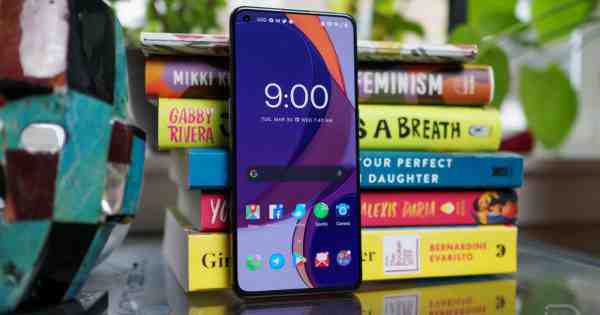
As we get deeper into the generations of devices, it’s clear that flagship phone launches mean two types of devices: a good one (Samsung’s Plus/Ultra, OnePlus Pro, etc.) and the cheaper one, such as the standard Galaxy S21 and OnePlus 9. Each phone has a purpose in the lineup, mainly to fulfill a certain price point. The question to me is, does this OnePlus 9 fulfill a role deeper than hitting a low price? I’ll obviously get into the nitty gritty below, so let’s just dive right into this thing.
This is our OnePlus 9 review.
What I Like
Specs – At its starting price of $729, this phone has all I’d need on paper. It has the latest Snapdragon chipset from Qualcomm, the 888, it has all the RAM I’d need, it has all of the cameras, it has the 120Hz refresh rate display, it has a large battery, and it has ridiculously fast wired charging. This thing is sweet at that price point. Allow me to provide you with the specifics.
The OnePlus 9 has a 6.55″ FHD AMOLED (2400×1080, 120Hz) display, Snapdragon 888, 128GB+ storage, 8GB+ RAM, triple rear camera system (primary sensor is the Sony-made IMX689), 4500mAh battery with wired Warp Charge 65T, 15W Qi wireless charging, 802.11ax WiFi, Bluetooth 5.2, NFC, in-display fingerprint (optical), stereo speakers, alert slider, and OxygenOS 11 at launch (based on Android 11).
At $729, this phone has everything average buyers should need and then some. The main highlights just from that list are the charging speeds, the same camera system as the OnePlus 8 Pro from last year (which was awesome), the 120Hz display, and Android 11 at launch, which is nice because we don’t need to wait for it and both the 9 and 9 Pro should receive Android 12 timely.
Display – OnePlus 9 comes equipped with a 6.55″ FHD AMOLED display, capable of 120Hz refresh rate. It’s not too big and not too small. In fact, I’d say it’s just right. After living with this thing for a couple of weeks, my main takeaway from the display is that while it gets plenty dark, I wish it got a bit brighter. Besides wishing for a bit more brightness, the other takeaway is the refresh rate. Yeah, I’m not sure why more people aren’t realizing how important 120Hz is. Like, if the Pixel 6 doesn’t have it, I think we should riot. Coupled with that 120Hz, OnePlus’ software is as smooth as butter (more on that in a bit), but it’s important to note here because I think the software helps the display appear fast to the human eye. Speaking more on the color and contrast, it’s a very solid panel, getting plenty dark and recreating rich colors.
There’s plenty of stuff you can tweak with this display, too. From the settings menu, owners can access Vision Comfort for your night time sleepy eyes, Reading Mode, Ambient Display, advanced calibration settings, and also throttle back the refresh rate if maybe the 120Hz isn’t your thing. For being the least expensive option in the new lineup, you’ve got plenty of choice here and I don’t think you’ll come across any issues with the display overall.
Performance – I’ve been trying to ensure that everyone knows this about OnePlus phones — they just hit different. If you’re unfamiliar with that phrase, it means something is really good, and when talking about the performance of OnePlus devices, such as the OnePlus 9 and 9 Pro, these phones are in a tier of their own. Even with the lower-priced $729 (8GB RAM) option, you’ll likely be way smoother than what I see from my Pixel 5 and possibly even my $1300 Galaxy S21 Ultra. I know nothing of the science behind it, but it’s what I feel and see when using OnePlus devices. It’s smooth!
And sure, any phone can be tuned to perform well when it comes to scrolling through apps or whatever, but even gaming, this phone handles it exceptionally well. I’m not doing the hardcore gaming like I used to, but I played the new Crash Bandicoot for a few hours and that was extremely smooth. I also used an app called Solar Smash, which is a graphics-heavy app that simulates different ways to destroy the Earth. It performs flawlessly on this phone, so I’m sure the average person will have no issues with gaming and other various tasks.
Editor’s Note: I’m now seeing Kellen used the same “hits different” joke in his OnePlus 9 Pro. That means it must be true!
Software – Not to be lazy or anything, but I echo everything Kellen touches on with the OnePlus 9 Pro and it’s the same exact software experience on that phone as it is on this one. While we’re not seeing a bunch of new features with OxygenOS 11 (based on Android 11), OnePlus’ software experience is feeling smoother than ever. And with the integration of Google’s services, such as Discover and the inclusion of all of Google’s apps and OnePlus ditching some of their own, I’m really liking this after having used the Pixel 5 for some time.
Below is a quick excerpt from Kellen’s software portion. Hopefully he doesn’t mind. It highlights one of my favorite little things (custom icon support), but pinpoints that it’s not new stuff we’re getting in OxygenOS 11, it’s just getting a lot better as it matures.
For the OnePlus 9 Pro (v11.2.1.1), we aren’t getting a bunch of new features necessarily. What we do get is a further refined experience with OnePlus’ always-on display, all of the gestures that have been baked in for several years, the options for customizing icons and shapes and fonts and lock screen content, etc. Again, it isn’t a bunch of new stuff, it’s just better on some level.
Battery – Unlike Kellen, I wasn’t running into any sort of battery issues with this phone. I get up at about 7AM every day and go to bed around 11PM. I’d be going to bed with around 5 hours of screen on time and a little bit of juice left, no problem. And the thing is, even if I did have issues, this phone charges so stupidly fast.
The 65W Warp charging is ridiculous, there’s no other way to put it. You’re running low on juice? Plug it in for 10-20 minutes and you’ve got hours of battery life pumped into your phones. It’s pretty damn remarkable and should be one of those things that sways you into buying it. It’s absolutely awesome. While you don’t get the fast wireless charging speeds like on the OnePlus 9 Pro, I’ve not been a huge fan of wireless charging, so for me, that’s not a dealbreaker. You still get 15W wireless charging on this phone. Not bad at all.
Camera – When thinking of the OnePlus 9 camera system, just think of it like the OnePlus 8 Pro. It features the same main sensor from that phone, and from what we already know, that phone has a killer camera. The OnePlus 9 is no different. In total, we have three sensors: 48MP (Sony IMX689) with EIS, ultra-wide 50MP, and a 2MP monochrome camera. We did a lovely little camera comparison between this phone, the Galaxy S21 Ultra, and the Pixel 5. Not too surprisingly, this phone keeps up fine with those devices, and honestly, there’s no clear winner from the bunch. For the least expensive option in OnePlus’ new lineup of phones, that’s awesome.
In the camera app, there are all of the modes and options you’d need when out and about. There’s a dedicated Portrait mode, Nightscape, Pro, Time Lapse, Panorama, Slow Motion, and Tilt Shift. When snapping shots, I find the camera to be really fast and capable. The colors it picks up seem great and overall contrast mixed with exposure levels are pretty darn spot on. It’s not Pixel camera (rich, deep contrast) good, but it’s good. The OnePlus 8 Pro also impresses us, so since it’s the same shooter as that phone, it’s no shock that the OnePlus 9 brings the goods. It’d have been nice to have OnePlus include the new Sony sensor on this device as they did with the OnePlus 9 Pro, but I suppose they need to give people a reason to pay more money. Oh well.
What I Dislike
Little Nit Picky Things That Add Up – This is a very important section. Instead of making different sections for everything I dislike, I’m basically gonna cram it all in here, only because a lot of it is little nit picky things that don’t really deserve their own spot. However, when you add these things up, it can be a little frustrating to use this phone. I can’t lie, I’ve wanted to throw this phone against a wall, but that’s partly because life has just been hectic lately. It’s not your fault, OnePlus 9, but it kinda is.
Anyway, let’s start with the fingerprint reader. Now that I’ve reprogrammed it, it’s fine. Out of the box, though, after that initial setup, it was trash. Like, so bad. I have no idea why, but it wouldn’t recognize my finger to save my life. After a couple of days thinking I had a borked unit, I completely redid the set up and it’s working much better. Great, but that’s not all. Allow me to make the case that optical sensors are total buns, but not necessarily in the accuracy department. The light the phone has to shine is way too bright. Let’s say I’m laying in bed, go to unlock my phone and BOOM, I’m fucking blinded by the little LED they stick in the display to light up your finger. That kinda thing sucks and it’s really jarring if you already have the Vision Comfort effect enabled on your display. It just isn’t how things should be in the future. For that reason, give me ultrasonic fingerprint sensors over this any day.
What This Phone Typically Looks Like
Next up? This Alert Slider. I love OnePlus’ Alert Slider, but this one? Naw, this is no good. The slider itself is way too loose. I’m not even trying to use it and every time I go to take the phone in and out of my pocket, it slides and changes my volume/vibrate/silent settings. I honestly can’t stand it. To counter, I just have to be more aware of how I’m handling my phone. On past OnePlus devices, the slider was a bit tougher to slide around, but this one is really light and loose, if that makes sense? It takes hardly any effort to slide it, which to me, isn’t ideal.
Right next to the Alert Slider is the power button. I can’t stand that either. It works fine for turning the display on and off, but I use the power button for its double click to open camera function. But again, this button is way too sensitive and it’s constantly opening the camera when I’m not trying to. I had to disable the function because it was irking me so badly. I was like that Thomas the Tank Engine meme — triggered!
Last up is the backside of this phone, the area surrounding the camera specifically. The camera module raises off of the body and the lenses raise off of that area, too. So here’s the thing with this — you get tons of hairs and dust and crap stuck in these little crevices, making this phone really hard to look at some times unless you stay on top of cleaning it. Hard to do that when it’s going in pockets all of the time. For this reason, I continue to advocate for flush cameras on the backside of phones. You know who did that? LG. You know what happened to them? RIP. Life’s rough, man.
It’s $729 and Plastic – After seeing a bit of clarification on what exactly is going on here, let me lay it out. The OnePlus 9’s frame is plastic. It’s a plastic phone. However, the backside of the phone is glass, not plastic. So if you drop it, you can shatter the back of the phone. But again, the frame itself is plastic. What does this mean? Well, it has essentially tricked my mind into thinking that this should be a cheaper phone than $729. It feels cheap. I know that might sound harsh, but by cheap, I mean it’s light and doesn’t really feel like much in your hand. Now, this might affect you differently than it does me. Coming from a Galaxy S21 Ultra, this phone feels like it weighs 1/10 of that device and my pockets are happy about that. However, will my brain ever think that this light, plastic frame phone is something premium? Probably not. Just in my silly opinion, I wish OnePlus appointed this phone with a metal frame. I’m not sure how it would affect the weight, or more importantly the cost, but if OnePlus wants to be in the premium smartphone game, those additions seem important to me.
Software Updates? – Google provides its Pixel phones with timely software updates for 3 years total (both major version updates and monthly security patches). Samsung, the king of Android updates (because we don’t count Google), offers updates to its phone for up to 4 years. As for OnePlus, they aren’t too bad, typically providing timely updates for the first 12 months after launch, then we see quite a slow down. Using OnePlus’ own phones as an example, the OnePlus 7 and 7 Pro only received Android 11 this month (March, ’21), many months after Google released it to the public for consumption. There was a lengthy beta period for Android 11, so we’re not sure what OnePlus was spending its time on. It certainly wasn’t updating its not-that-old phones.
If you go slightly newer, with the OnePlus 8 line, those devices received Android 11 a few weeks after release. Point being, OnePlus is great at updating newer phones, but once they start releasing phones newer than the one you recently purchased, you’ll see your updates start to slow down. This isn’t how Google does it and it’s not how Samsung does it. With Samsung, we see massive waves of updates, all within a relatively short period. With OnePlus, expect to have a little wait after that initial 12 months of ownership.
Availability and Pricing
Starting at $729 for the 8GB + 128GB model, you can purchase the OnePlus 9 from a few retailers, as well as directly from OnePlus. If you have the chance, we recommend buying the unlocked units, instead of one from T-Mobile, as they tend to receive software updates quicker than carrier variants. If you need to go through T-Mobile for a deal, though, it’s fine. For just $100 more, you can completely spec out your OnePlus 9, with the 12GB RAM + 256GB storage model running you $828. If you think you need all of that RAM, then by all means.
OnePlus 9 Pricing Breakdown
OnePlus 9 Pro (12GB RAM + 256GB storage) : $1069
: $1069 OnePlus 9 Pro (8GB RAM + 128GB storage) : $969
: $969 OnePlus 9 (12GB RAM + 256GB storage) : $828
: $828 OnePlus 9 (8GB RAM + 128GB storage): $729
Videos
Unboxing
Gallery
The Verdict
If I’m being honest, I would try to talk people into the OnePlus 9 versus the OnePlus 9 Pro. To me, they’re basically the same phone, but you’re getting more value from the OnePlus 9. This phone has a great camera setup, an extremely smooth user experience, that super fast wired charging, and good software that may or may not see timely updates after 12 months. At $729, that seems like a steal to me. The Pixel 5 is $699. This OnePlus 9 is $30 more. It’s not even a question if software updates aren’t a huge priority to you. Get this phone, it’s really good. Does it have a few shortcomings? Sure, but I can argue that you’re still getting one helluva package with all of the specs you really want and need. Just don’t get mad when OnePlus releases the OnePlus 9T later this year. It’ll probably be really, really good.
OnePlus launches another, unremarkable new phone without a peep
OnePlus is not done launching phones and has now put out a cheaper version of the Nord N20 on AliExpress. Dubbed the OnePlus Nord N20 SE, the smartphone packs an almost two-year-old MediaTek processor and a few other compromises to come in cheaper than the Nord N20.
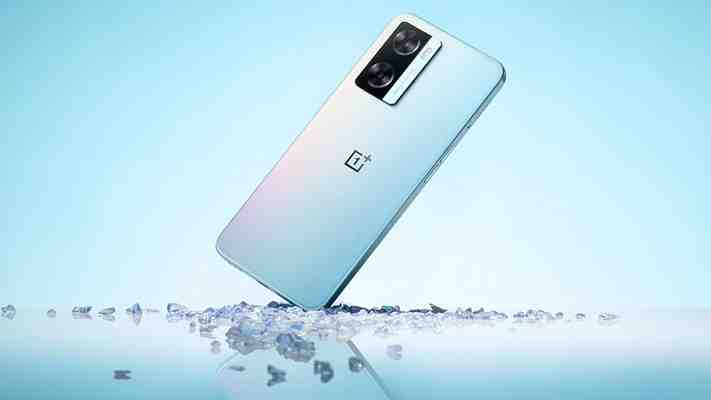
4 Reviews
Days after launching the OnePlus 10T, OnePlus has now quietly taken the wraps off the OnePlus Nord N20 SE. The phone is now up on AliExpress and will go on sale on August 8.
The Nord N20 SE is a cheaper version of the OnePlus Nord N20. It features a MediaTek Helio G35 SoC, 4 GB of RAM, 64 GB of storage, and supports a microSDXC expansion card of up to 1 TB. A 6.56 inches HD+ LCD panel with a resolution of 720 x 1612 dominates the front of the Nord N20 SE. Finally, a gigantic 5000 mAh battery that supports 33 W SUPERVOOC fast charging keeps the show running.
Like the rest of the device, the camera situation is also nothing out of the ordinary. There are two cameras on the back, a 50 MP primary and a 2 MP depth sensor. Around the front, there is a single 8 MP unit that supports face unlock.
The OnePlus Nord N20 SE is priced at US$199 before discounts from AliExpress which can bring the price down to a low of US$139.99. It appears the OnePlus Nord N20 SE will start shipping first to Europe before orders start making their way to the United States from next month.
Buy OnePlus Nord N20 5G on Amazon


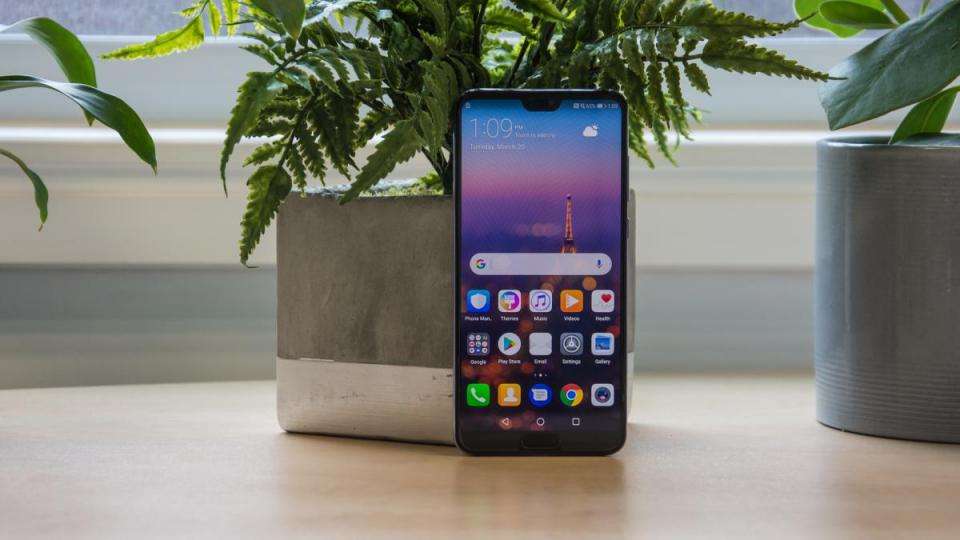
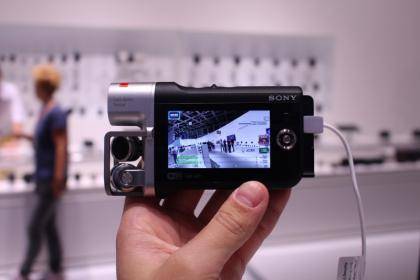
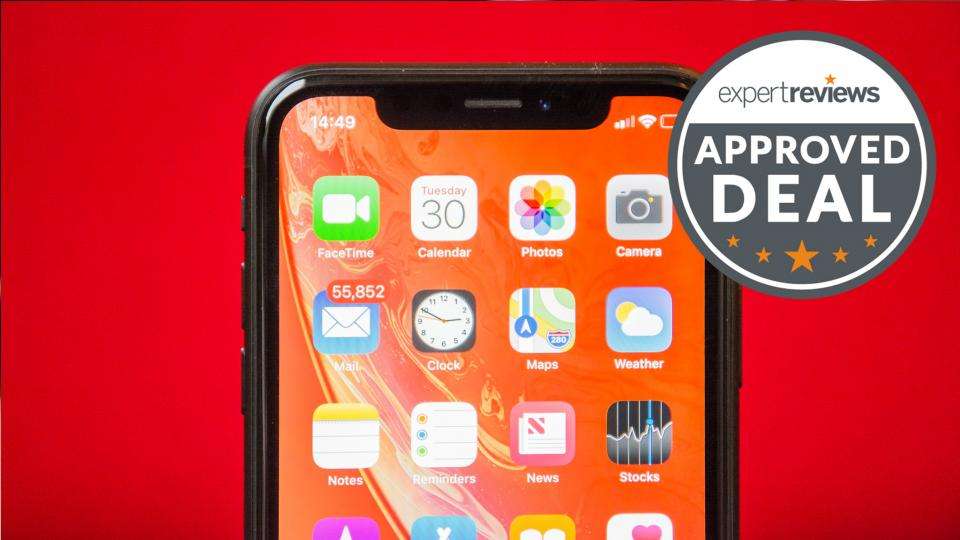
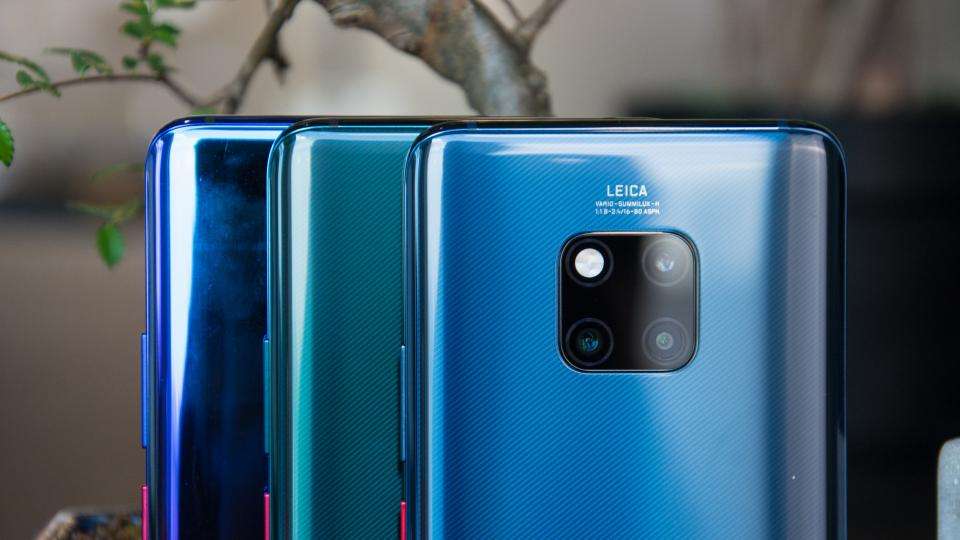
Leave a Reply